A Red-eyed green frog (Agalychnis callidryases) at the Montibelli private wildlife reserve, Ticuantepe, Nicaragua: photo by Inti Oconinti Ocon/AFP, 12 September 2016
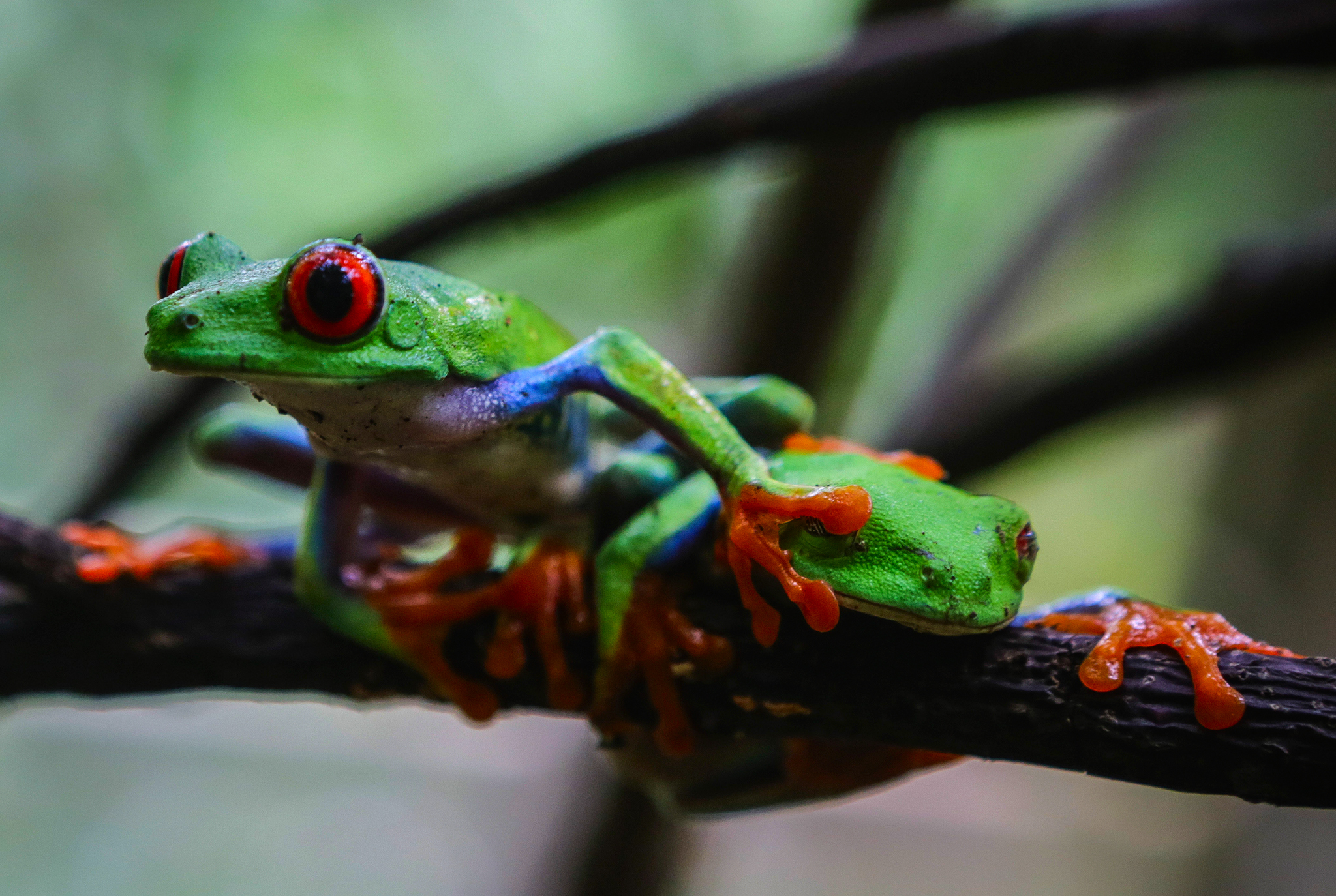
A Red-eyed green frog (Agalychnis callidryases) at the Montibelli private wildlife reserve, Ticuantepe, Nicaragua: photo by Inti Oconinti Ocon/AFP, 12 September 2016
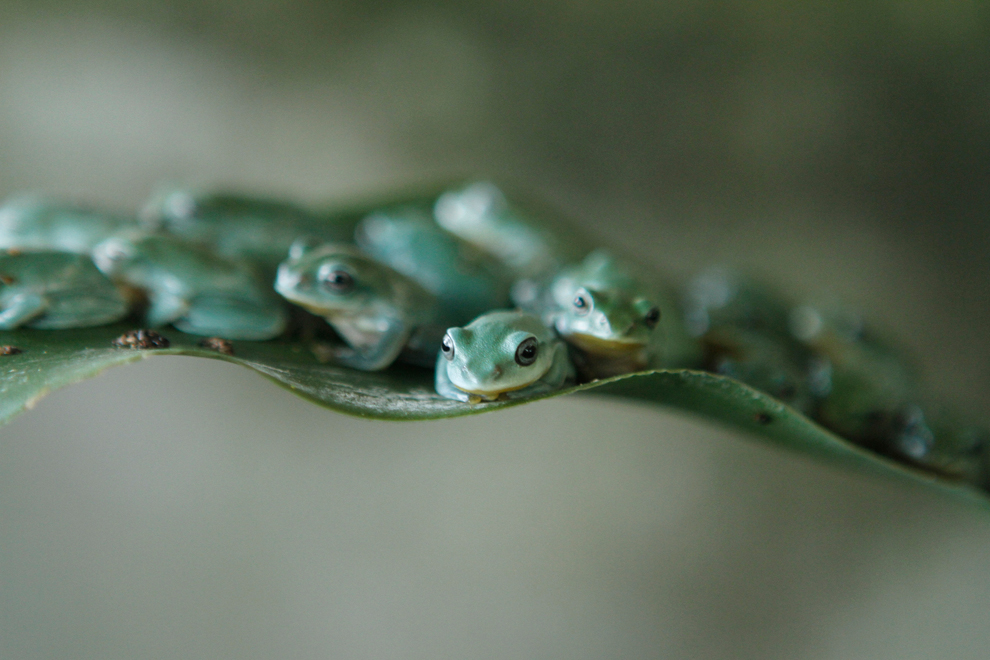
Tree frogs sit on a leaf at an amphibian feeding camp outside Hanoi. Vietnam's first amphibian breeding farm was established in 2004 with the aim of promoting environmental awareness, conservation, and export of the animals as pets: photo by Kham/Reuters, 2011

A Heterixalus madagascariensis from Akanin'ny Nofy, #Madagascar: image via Johan Lind @etologen, 9 September 2016

Heterixalus madagascariensis. >99% of Malagasy #amphibians are endemic. Mad #Madagascar: image via Johan Lind @etologen, 2 September 2016

Found a wee #frog when cutting back the strawberry patch! #nationaltrust #Sunnycroft: image via Caroline Wakefield @cwake84, 2 September 2016

Check out those toe pads! Cuban #treefrog #InvasiveSpecies #Florida: image via Noah M. @mbystoma, 2 September 2016

A #frog in a pond is worth one in the bush...wait WHAT?!: image via Daniel S. Liuzzi Daniel S. Liuzzi, 2 September 2016
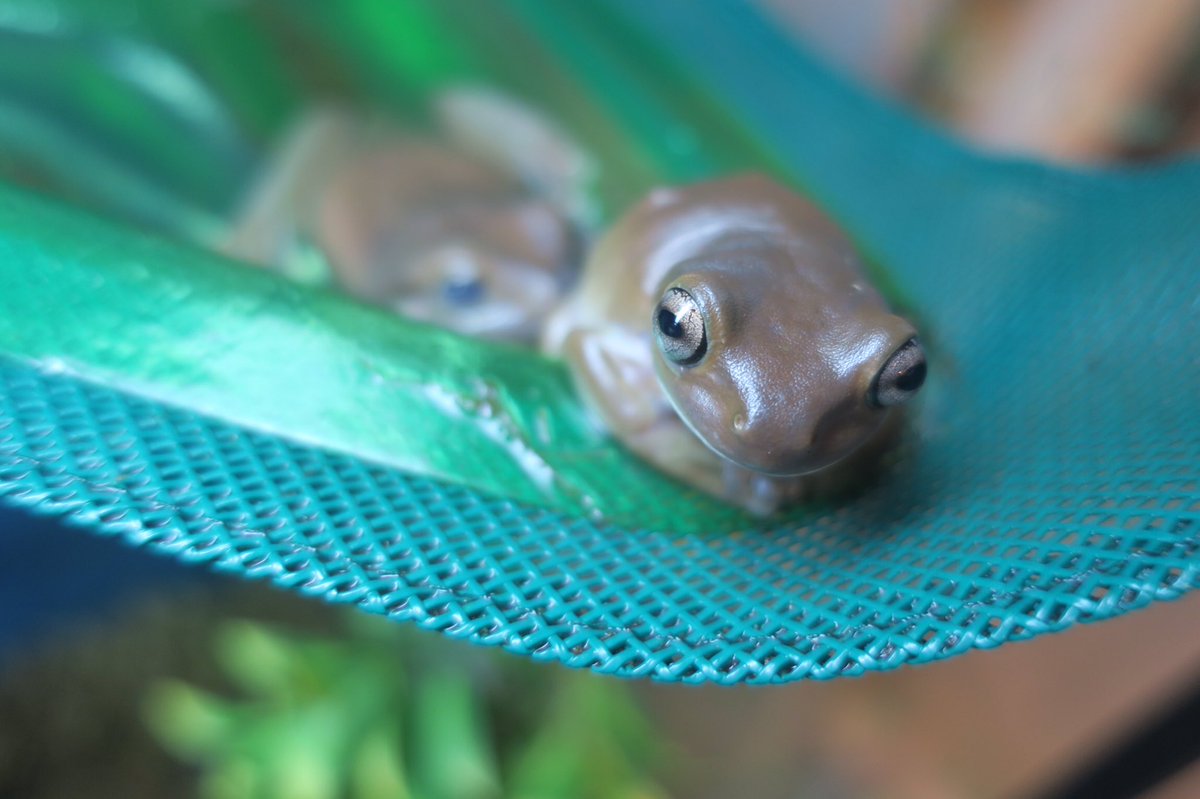
Jack! #hoppinhelp #frog: image via Hopp'in Help @Hoppin_Help, 2 September 2016
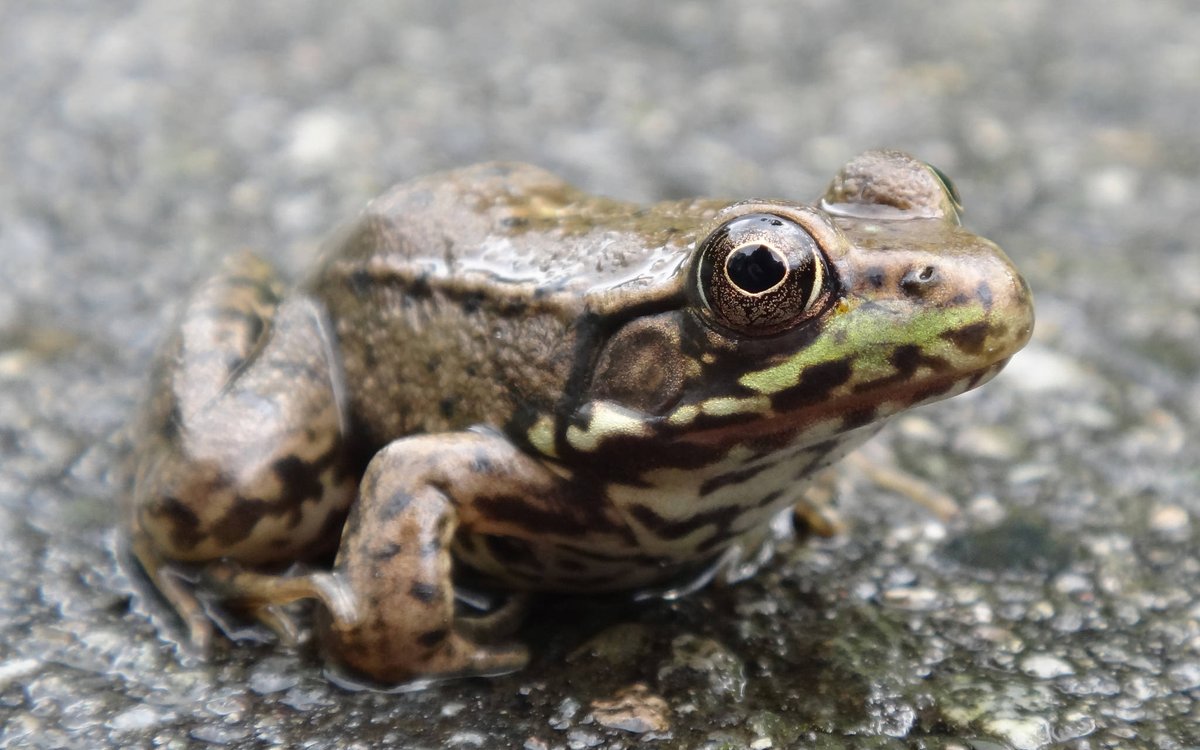
Found a cute #frog during a wet and late afternoon hike on the #PoCo Trail. #portcoquitlam: image via Geoffery Kehrig @GeofferyKehrig, 2 September 2016
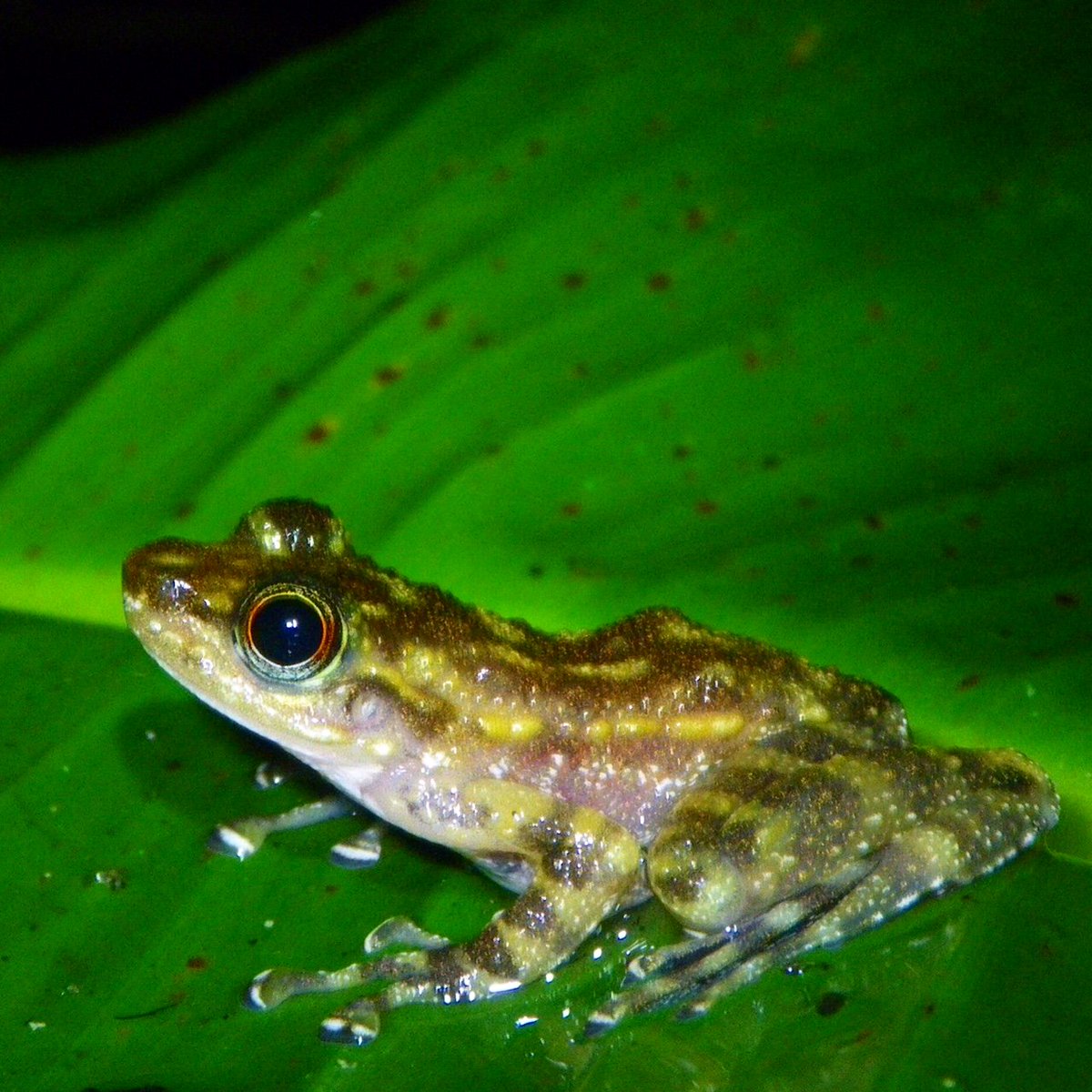
The torrent #frog Amolops cremnobatus is extremely abundant in rocky streams in northern central #Vietnam: image via Jodi Rowley @jodirowley, 6 September 2016
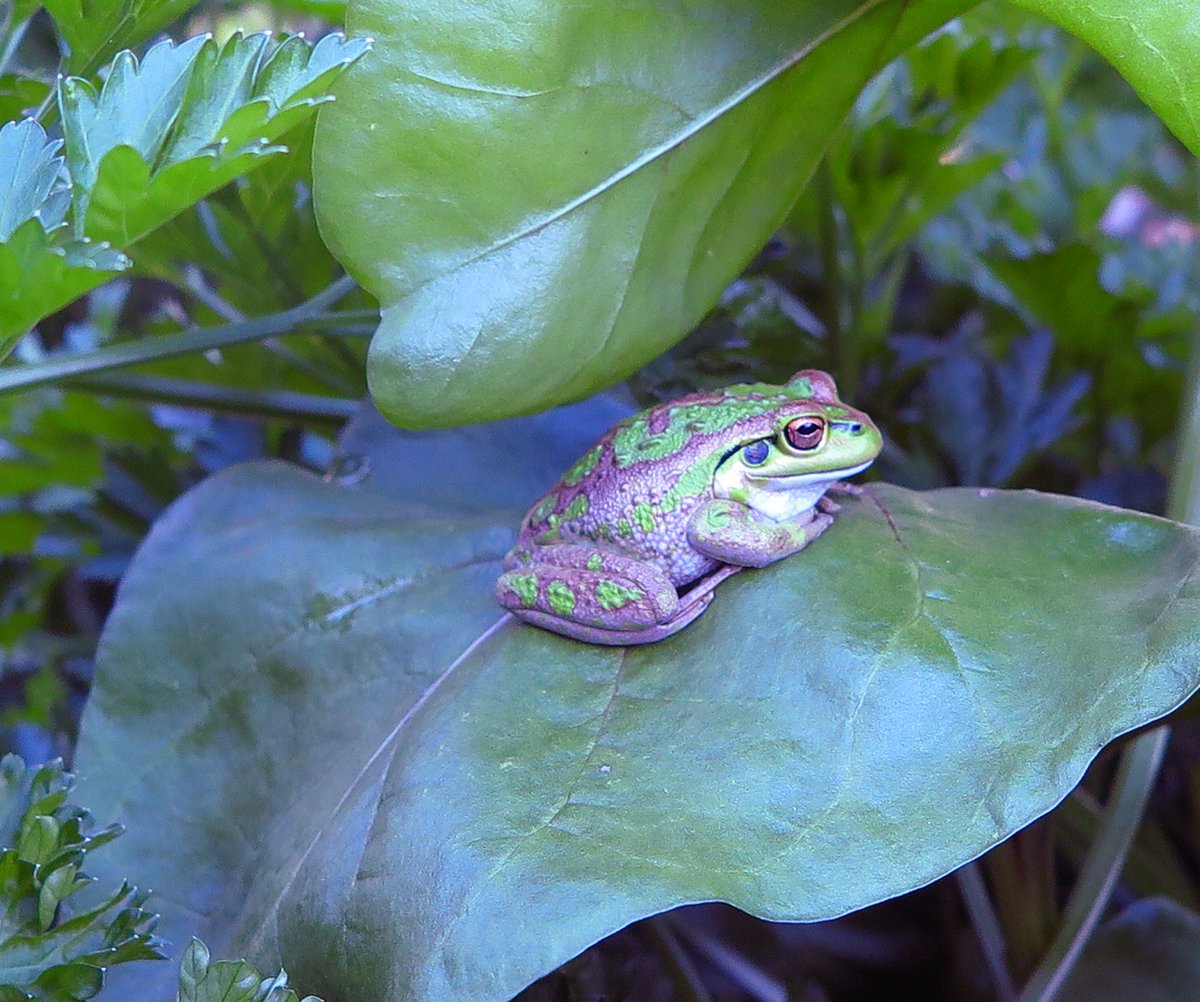
Today's Garden #Frog little smirky frog sitting on the chard. A foot-soldier in my Green Army fighting garden pests: image via Will-le: Wagtail, SC@AngryWagtails, 10 September 2016

I spy a #frog! The recent rain has made this creek a creek again, it was muddy at the best of times all summer #ptbo: image via PTBO Flora @PTBOFlora, 12 September 2016

@jcu researchers turn to crowdfunding to save endangered corroboree #frog via @ABCnrthqld: image via Jen King @JustJenKing, 12 September 2016
Stevie Smith: The Frog Prince
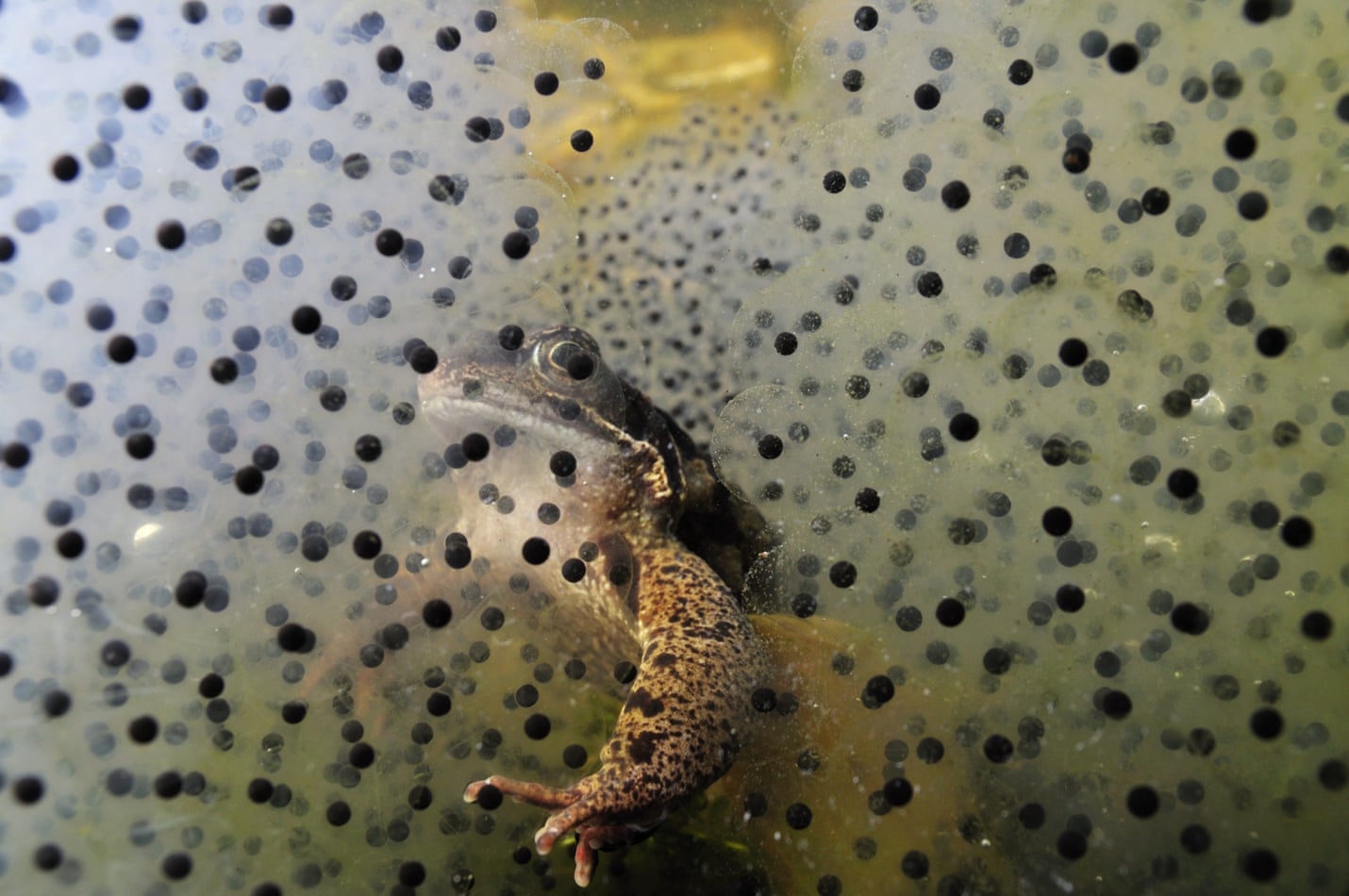
Common frog (Rana temporaria) and frogspawn in a garden pond in Surrey, England. Frogs are breeding early this year due to the mild autumn weather: photo by Linda Pitkin via The Guardian, 29 November 2014
 .
.
Common
frog (Rana temporaria) and frogspawn in a garden pond in Surrey,
England. Frogs are breeding early this year due to the mild autumn
weather: photo by Linda Pitkin via The Guardian, 29 November 2014
I am a frog
I live under a spell
I live at the bottom
Of a green well
And here I must wait
Until a maiden places me
On her royal pillow
And kisses me
In her father’s palace
The story is familiar
Everybody knows it well
But do other enchanted people feel as nervous
As I do? The stories do not tell,
Ask if they will be happier
When the changes come
As already they are fairly happy
In a frog’s doom?
I have been a frog now
For a hundred years
And in all this time
I have not shed many tears,
I am happy, I like the life,
Can swim for many a mile
(When I have hopped to the river)
And am for ever agile.
And the quietness,
Yes, I like to be quiet
I am habituated
To a quiet life,
But always when I think these thoughts
As I sit in my well
Another thought comes to me and says:
It is part of the spell
To be happy
To work up contentment
To make much of being a frog
To fear disenchantment
Says, It will be heavenly
To be set free,
Cries Heavenly the girl who disenchants
And the royal times, heavenly,
And I think it will be.
Come then, royal girl and royal times,
Come quickly,
I can be happy until you come
But I cannot be heavenly,
Only disenchanted people
Can be heavenly.
I live under a spell
I live at the bottom
Of a green well
And here I must wait
Until a maiden places me
On her royal pillow
And kisses me
In her father’s palace
The story is familiar
Everybody knows it well
But do other enchanted people feel as nervous
As I do? The stories do not tell,
Ask if they will be happier
When the changes come
As already they are fairly happy
In a frog’s doom?
I have been a frog now
For a hundred years
And in all this time
I have not shed many tears,
I am happy, I like the life,
Can swim for many a mile
(When I have hopped to the river)
And am for ever agile.
And the quietness,
Yes, I like to be quiet
I am habituated
To a quiet life,
But always when I think these thoughts
As I sit in my well
Another thought comes to me and says:
It is part of the spell
To be happy
To work up contentment
To make much of being a frog
To fear disenchantment
Says, It will be heavenly
To be set free,
Cries Heavenly the girl who disenchants
And the royal times, heavenly,
And I think it will be.
Come then, royal girl and royal times,
Come quickly,
I can be happy until you come
But I cannot be heavenly,
Only disenchanted people
Can be heavenly.
Florence Margaret "Stevie" Smith (1902-1971): The Frog Prince, from The Frog Prince, 1966
William Robert Symonds The #Princess and the Frog 1894 #BradfordMuseumsandGalleries: image via GPN Arts and Culture @GpnArts, 21 November 2014

Common Water Frog (Rana esculenta): photo by Holger Gröschl, 2003
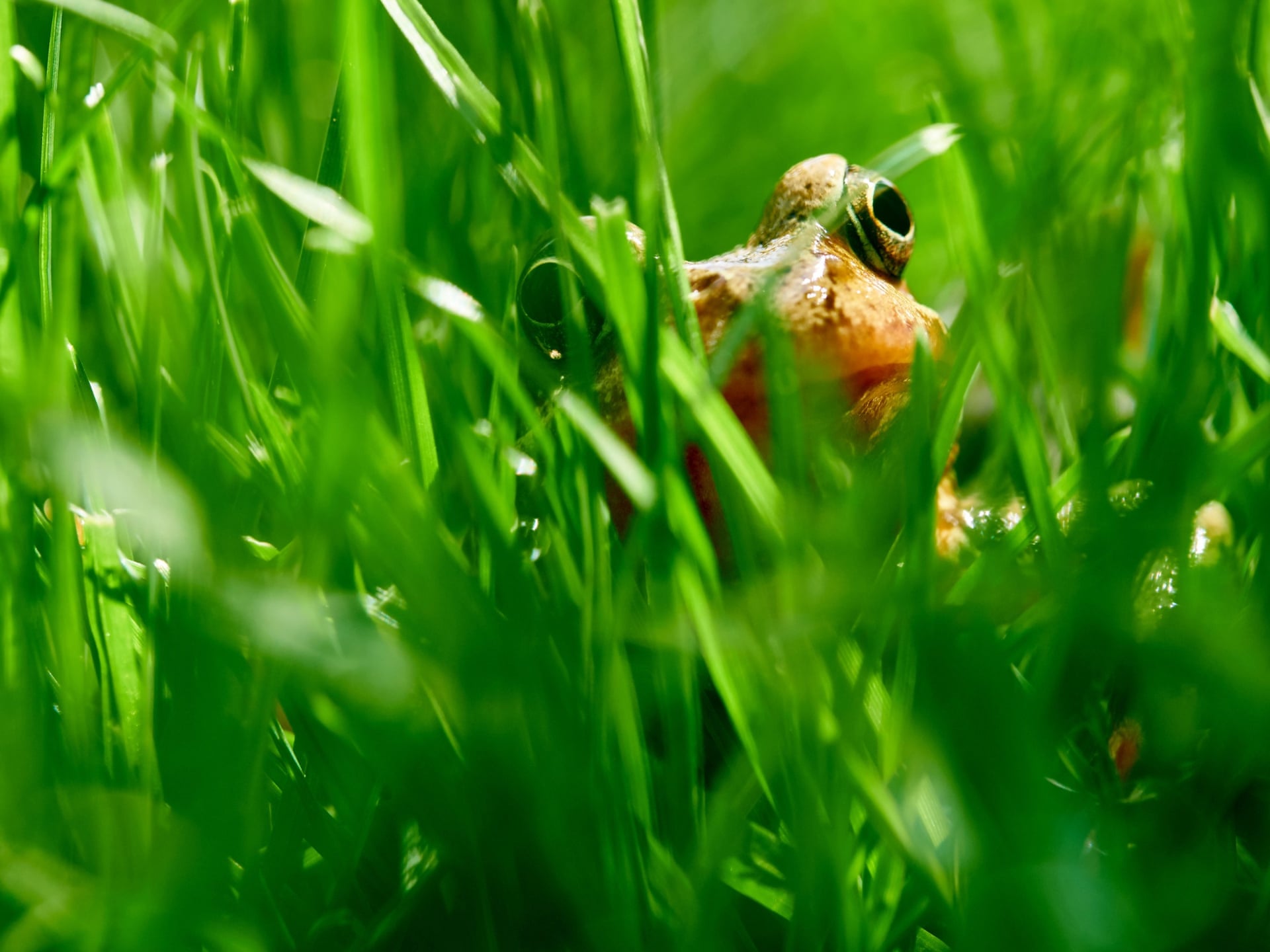
A frog peeks out of grass on a garden lawn in Billericay, Essex, UK: photo by Roj Whitelock/Alamy via the Guardian, 15 May 2015
 .
.
A frog peeks out of grass on a garden lawn in Billericay, Essex, UK: photo by Roj Whitelock/Alamy via the Guardian, 15 May 2015
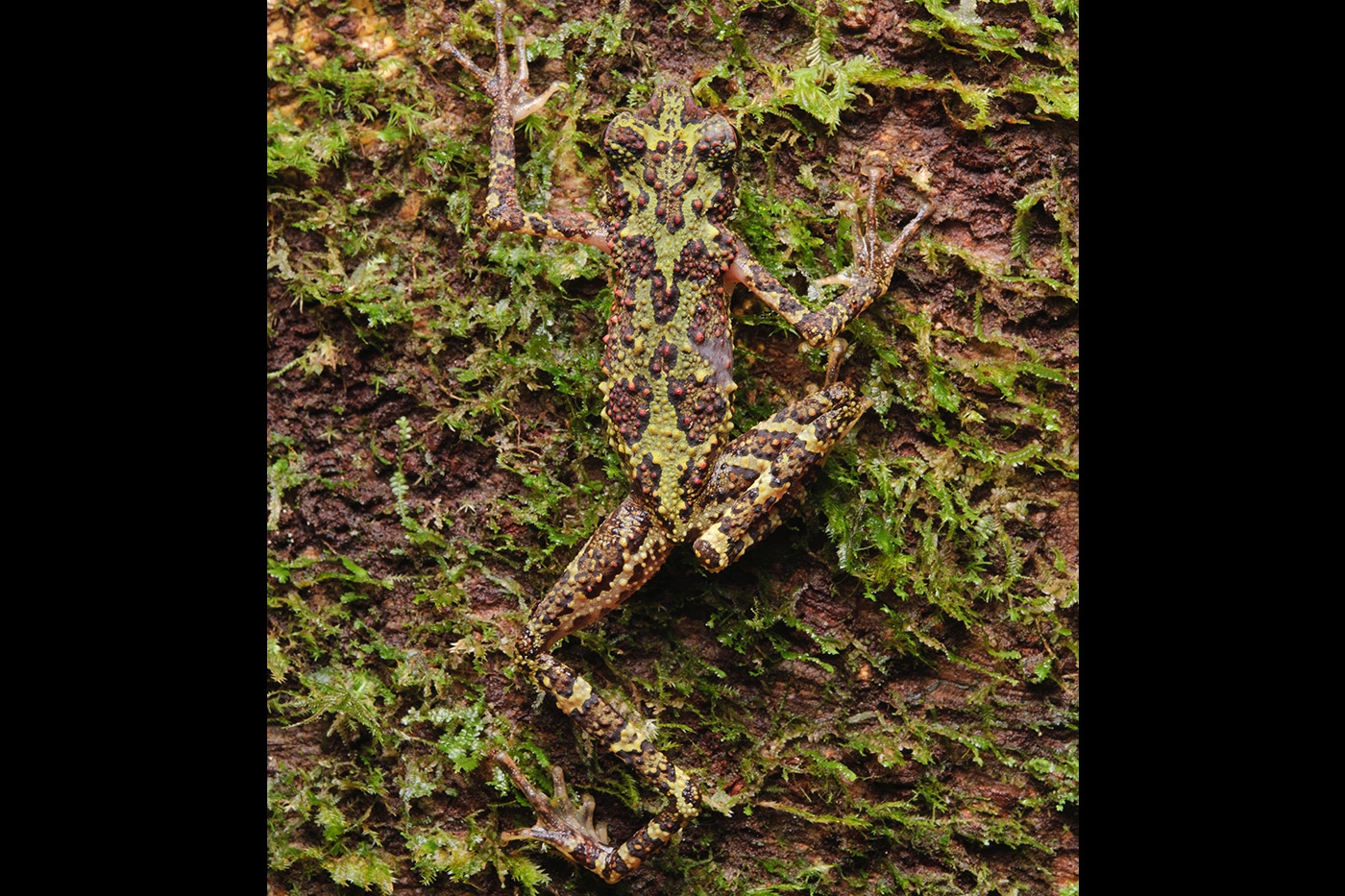
The endangered Bornean rainbow toad (Ansonia latidisca) was photographed for the first time in 2011. It had last been spotted in the 1920s. Habitat loss and degradation are threatening this species, which is known from just two locations in western Borneo: photo by Chien Lee/Minden Pictures/FLPA via The Guardian, 10 December 2014
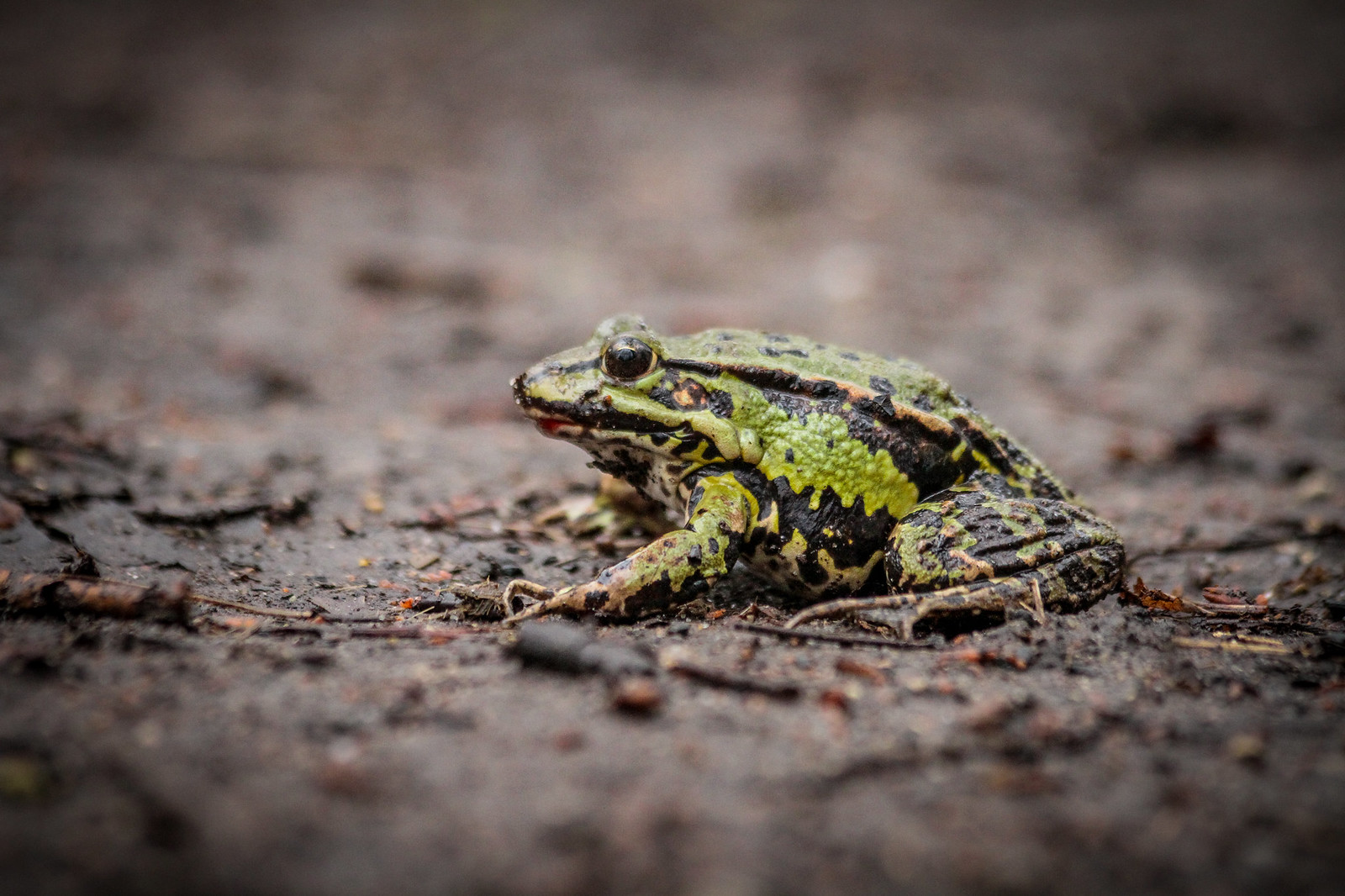
Untitled [frog, springtime, Sweden]: photo by Thomas Jacobson, 29 March 2015

Untitled [frog, springtime, Sweden]: photo by Thomas Jacobson, 29 March 2015
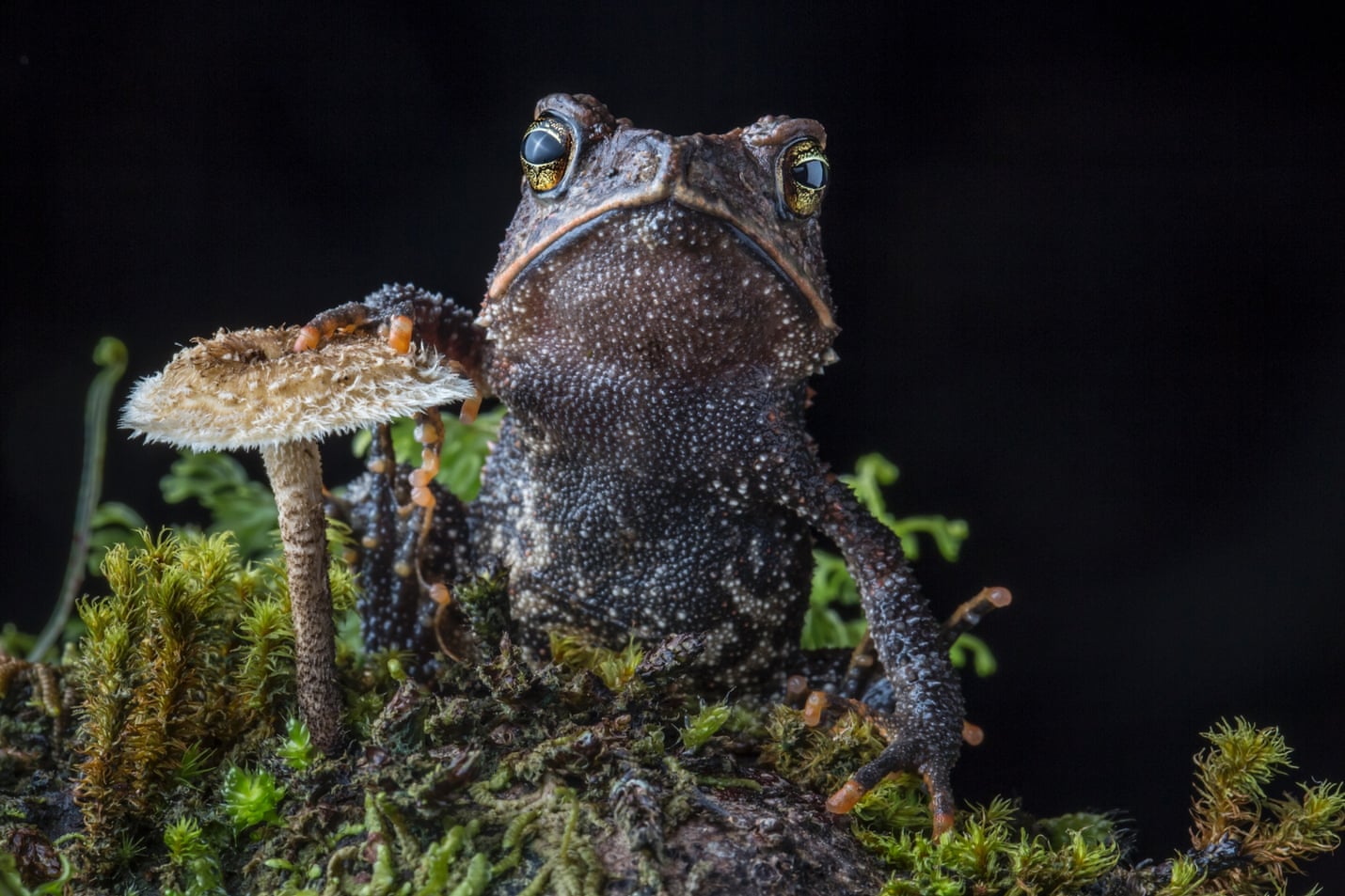
Cuchumatan golden toad, Incilius aurarius, from the Cuchumatanes mountains of Guatemala. The toad, discovered in 2012, was photographed during a search for the lost Jackson’s climbing salamander: photo by Robin Moore via The Guardian, 11 September 2014

Cuchumatan golden toad, Incilius aurarius,
from the Cuchumatanes mountains of Guatemala. The toad, discovered in
2012, was photographed during a search for the lost Jackson’s climbing
salamander: photo by Robin Moore via The Guardian, 11 September 2014
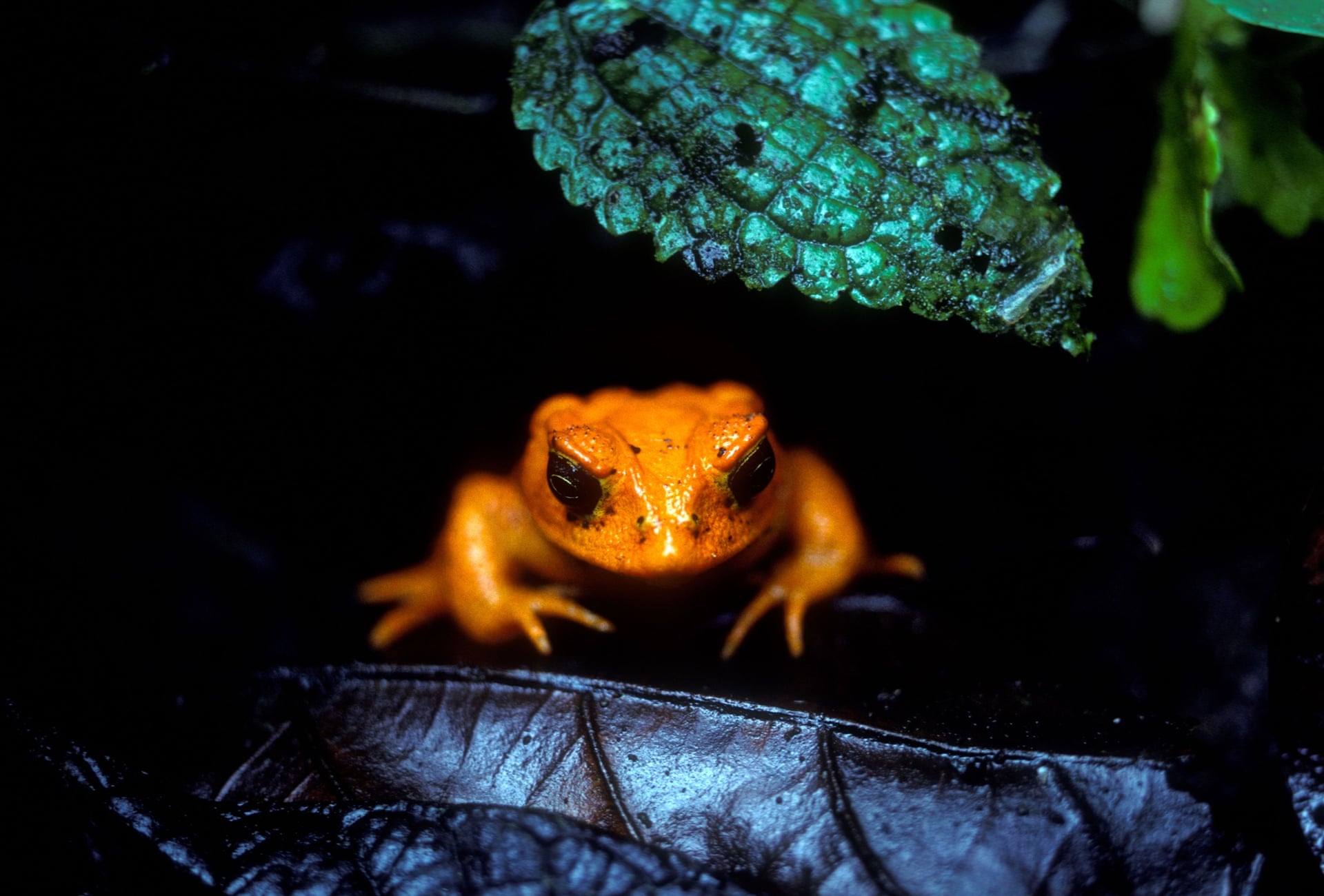
The now extinct golden toad (Bufo periglenes) was once abundant in the Monteverde cloud forest in Costa Rica. Scientists say one-in-six species faces extinction due to climate change.: photo by Robert Fried/Alamy via the Guardian, 1 May 2015

The
now extinct golden toad (Bufo periglenes) was once abundant in the
Monteverde cloud forest in Costa Rica. Scientists say one-in-six species
faces extinction due to climate change.: photo by Robert Fried/Alamy via the Guardian, 1 May 2015
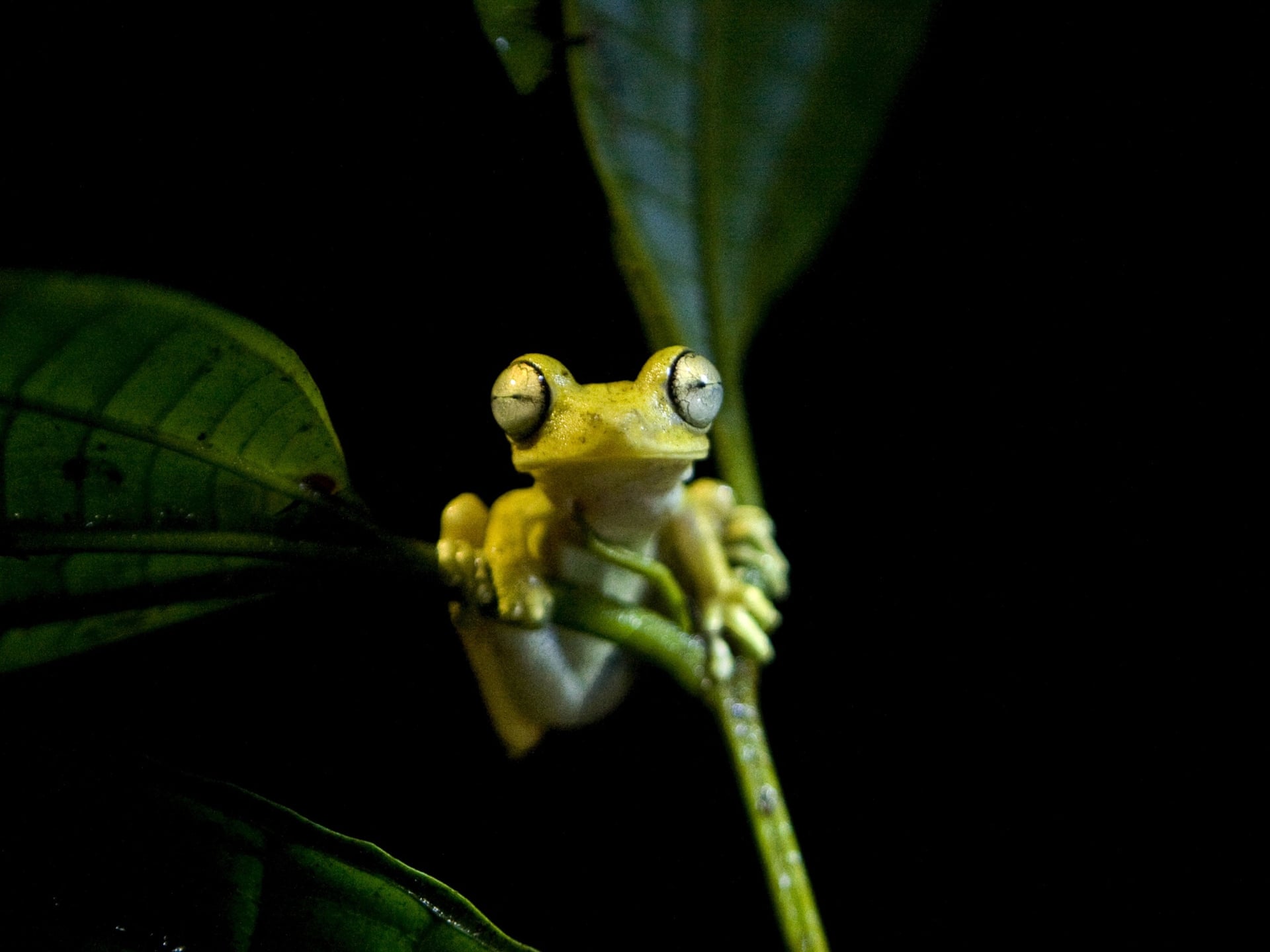
A frog in the Camisea jungle in Cuzco, Peru. Climate change, deforestation and illegal mining are a threat to species including turtles, crocodiles, birds, frogs and monkeys.: photo by Ernesto Benavides/AFP via the Guardian, 23 June 2014

A frog in the Camisea jungle
in Cuzco, Peru. Climate change, deforestation and illegal mining are a
threat to species including turtles, crocodiles, birds, frogs and
monkeys.: photo by Ernesto Benavides/AFP via the Guardian, 23 June 2014
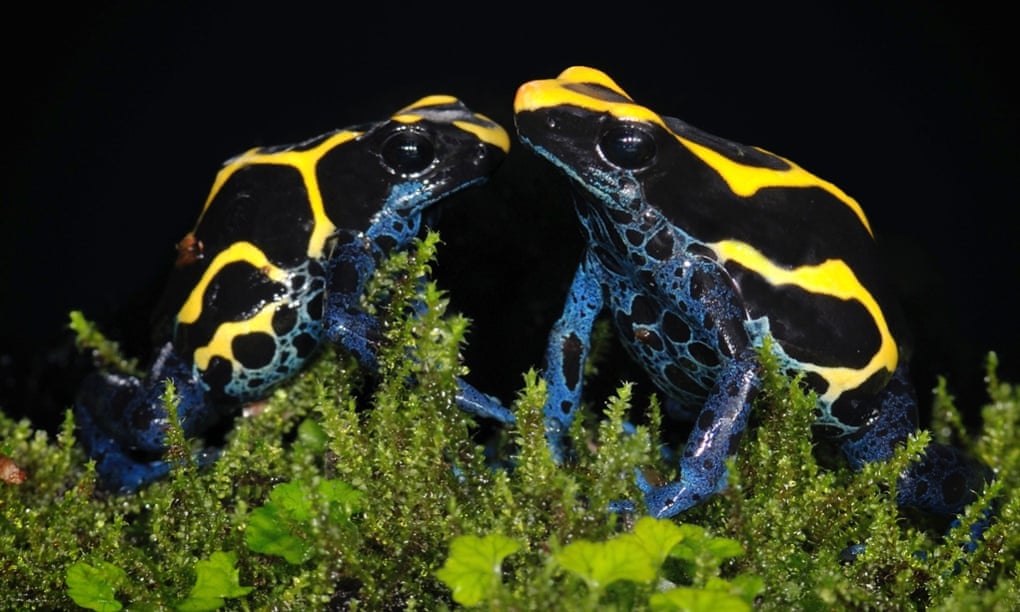
A pair of cobalt poison dart frogs (Dendrobates tinctorius) from Guiana: photo by Michael Kern via The Guardian, 14 November 2014

A pair of cobalt poison dart frogs (Dendrobates tinctorius) from Guiana: photo by Michael Kern via The Guardian, 14 November 2014

Green
and black poison dart frogs (Dendrobates auratus), part of a new Land
of Frogs permanent exhibition at the Gamboa Rainforest Hotel on the
outskirts of Panama City: photo by Carlos Jasso/Reuters via the Guardian, 9 January 2015

Green and black poison dart frogs (Dendrobates auratus), part of a new Land of Frogs permanent exhibition at the Gamboa Rainforest Hotel on the outskirts of Panama City: photo by Carlos Jasso/Reuters via the Guardian, 9 January 2015
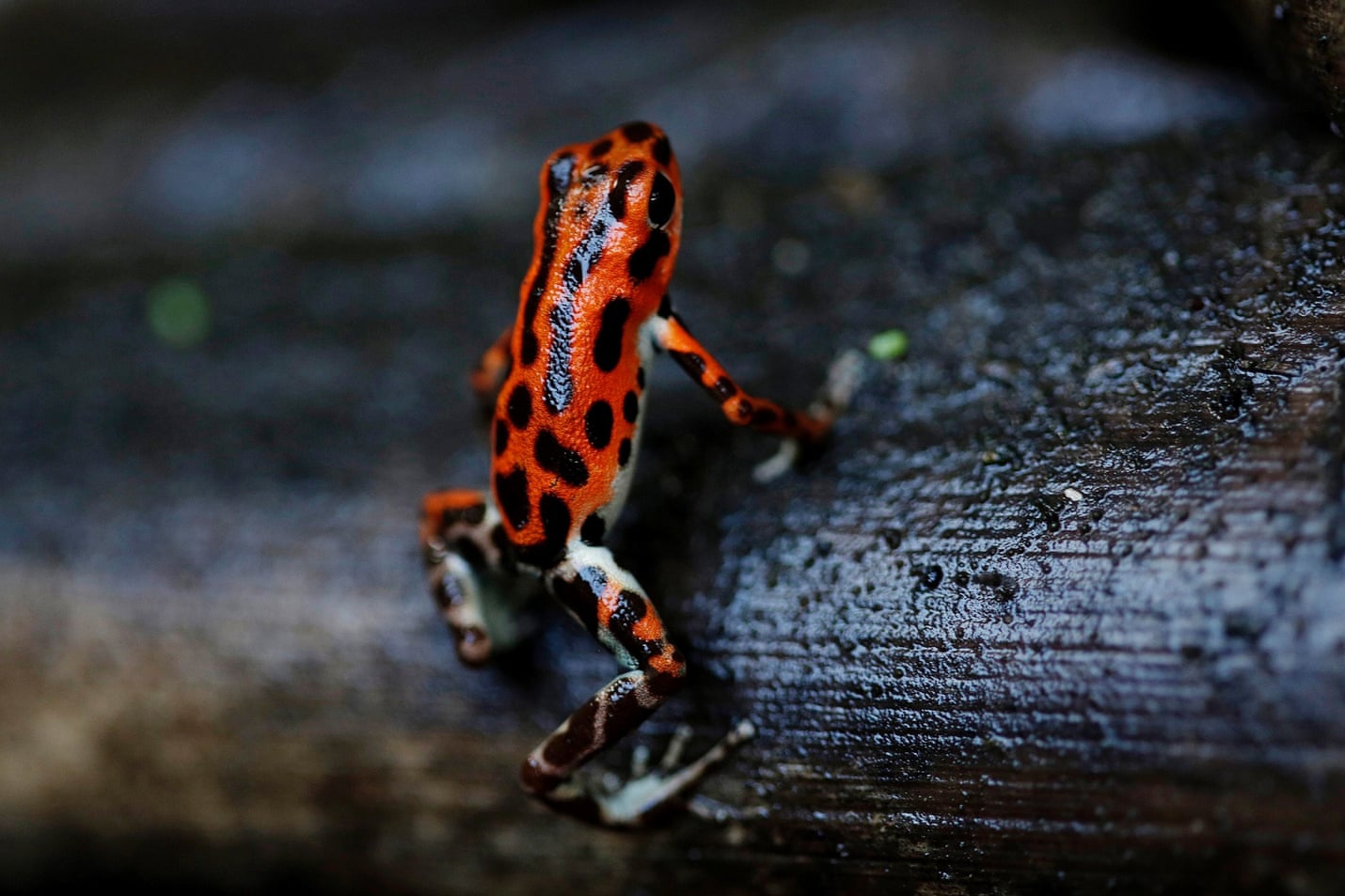
A
strawberry poison dart frog, part of the Land of Frogs exhibition at
the Gamboa Rainforest hotel on the outskirts of Panama City: photo by Carlos Jasso/Reuters via the Guardian, 9 January 2015

A
strawberry poison dart frog, part of the Land of Frogs exhibition at
the Gamboa Rainforest hotel on the outskirts of Panama City: photo by Carlos Jasso/Reuters via the Guardian, 9 January 2015
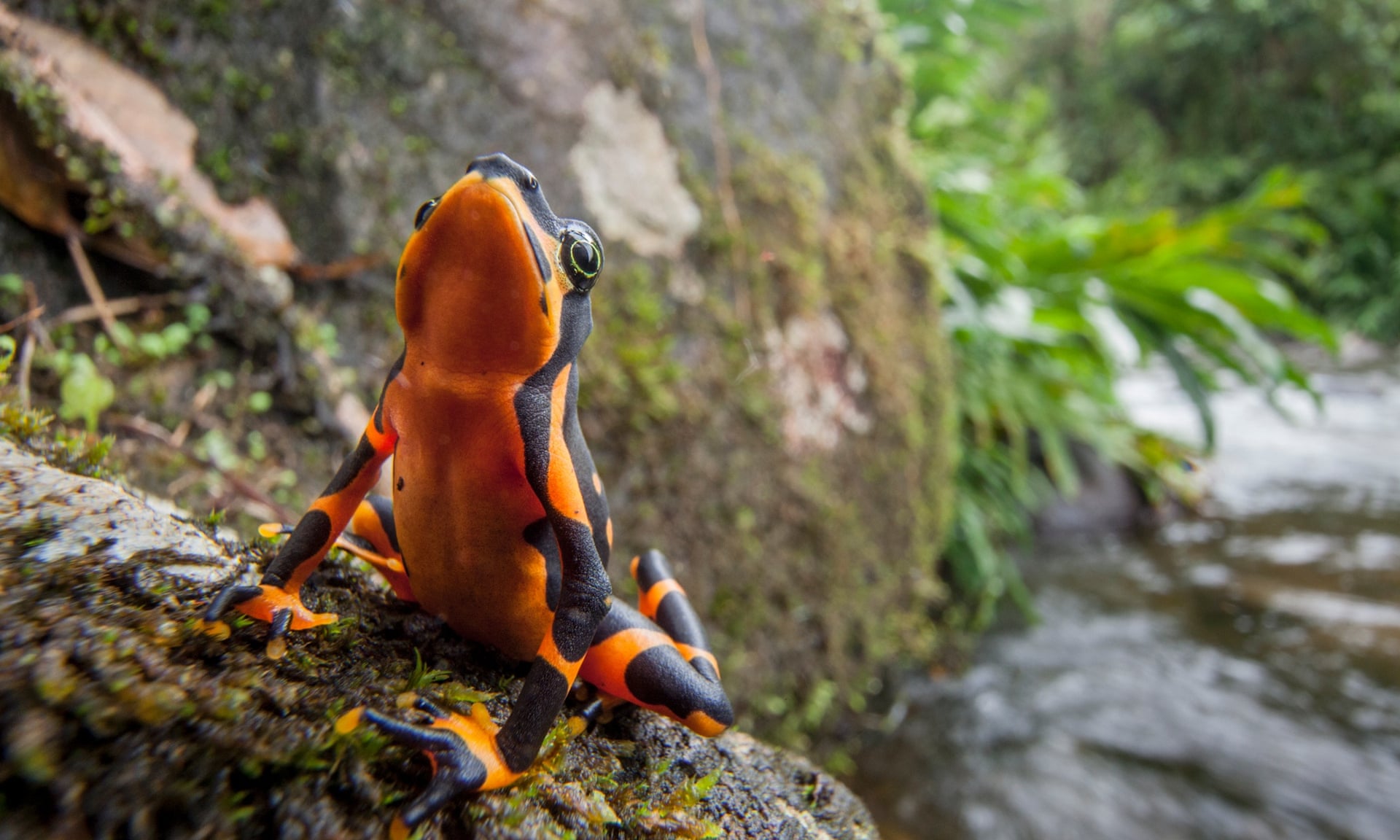
The variable harlequin frog, Atelopus varius,
disappeared from the forests of Costa Rica and Panama before being
rediscovered in 2003. The reappearance of these Lazarus frogs could help
us decipher how we prevent these and other frogs succumbing to
extinction: photo by Robin Moore via The Guardian, 11 September 2014

The variable harlequin frog, Atelopus varius,
disappeared from the forests of Costa Rica and Panama before being
rediscovered in 2003. The reappearance of these Lazarus frogs could help
us decipher how we prevent these and other frogs succumbing to
extinction: photo by Robin Moore via The Guardian, 11 September 2014
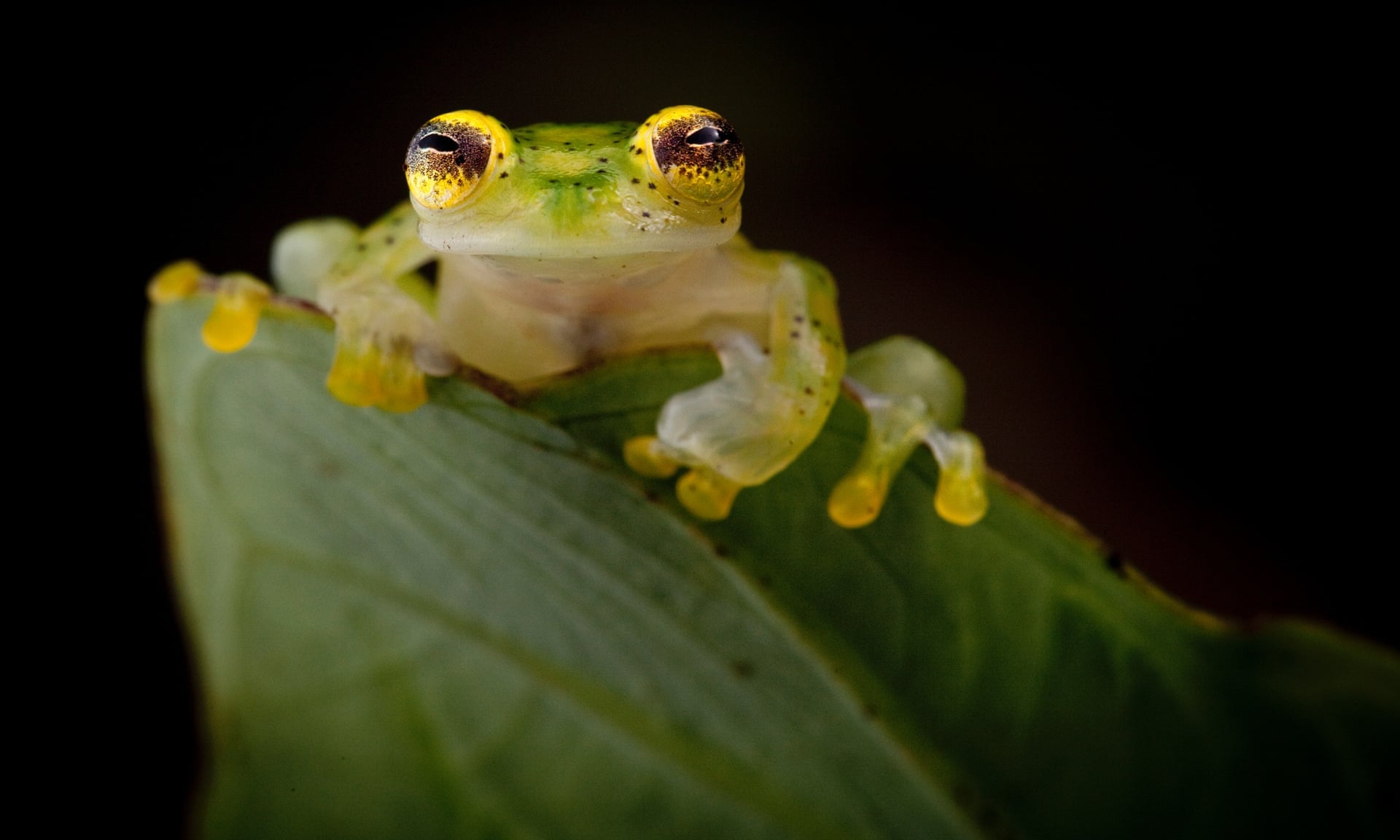
A reticulated glass frog in
the Chocó forests of Colombia. Armed conflict has kept developers out of
these forests, resulting in vast swathes of lush rainforest and a high
diversity of frogs: photo by Robin Moore via The Guardian, 11 September 2014

A reticulated glass frog in the Chocó forests of Colombia. Armed conflict has kept developers out of these forests, resulting in vast swathes of lush rainforest and a high diversity of frogs: photo by Robin Moore via The Guardian, 11 September 2014
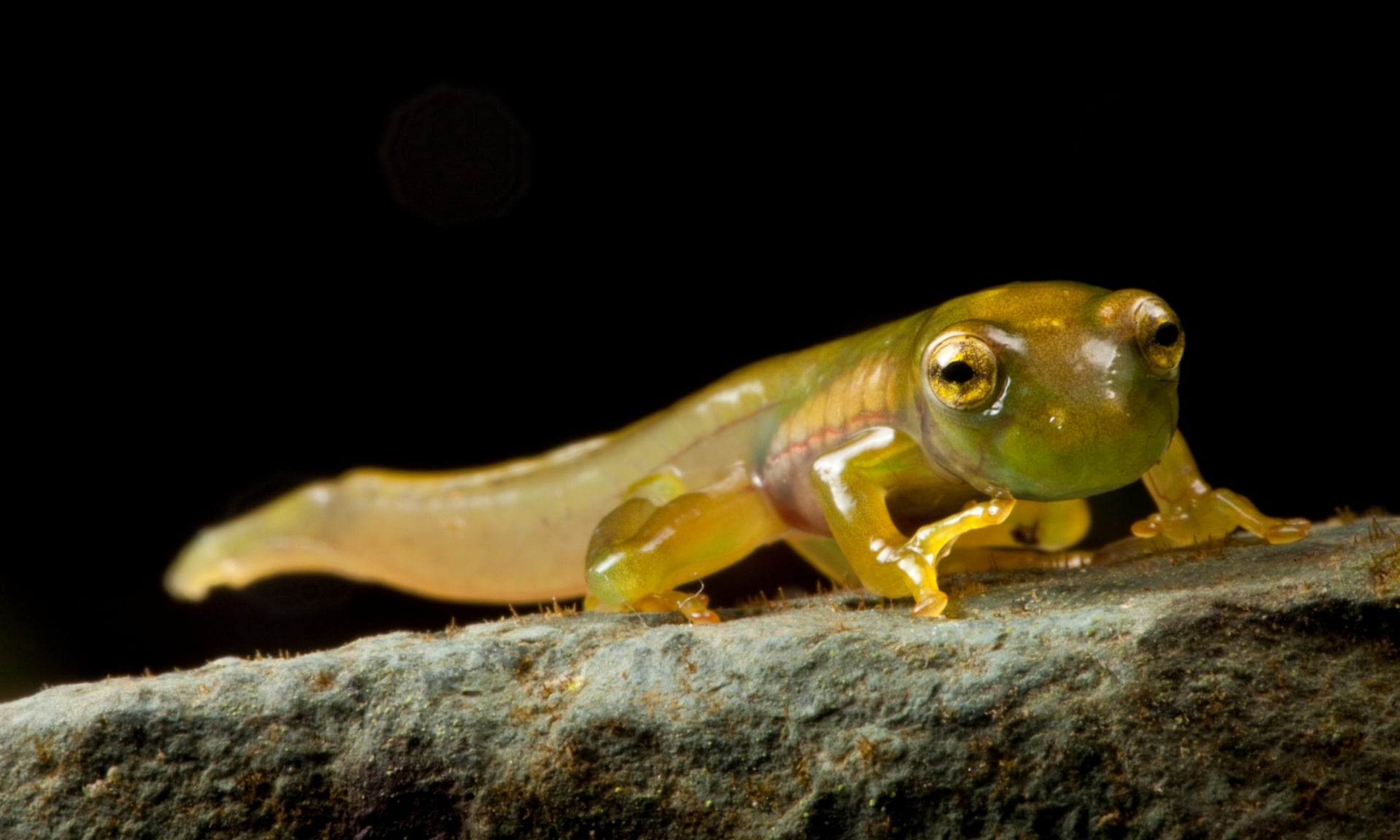
A newly metamorphosed emerald glass frog, Espadarana prosoblepon, in the Chocó forests of Colombia: photo by Robin Moore via The Guardian, 11 September 2014

A newly metamorphosed emerald glass frog, Espadarana prosoblepon, in the Chocó forests of Colombia: photo by Robin Moore via The Guardian, 11 September 2014
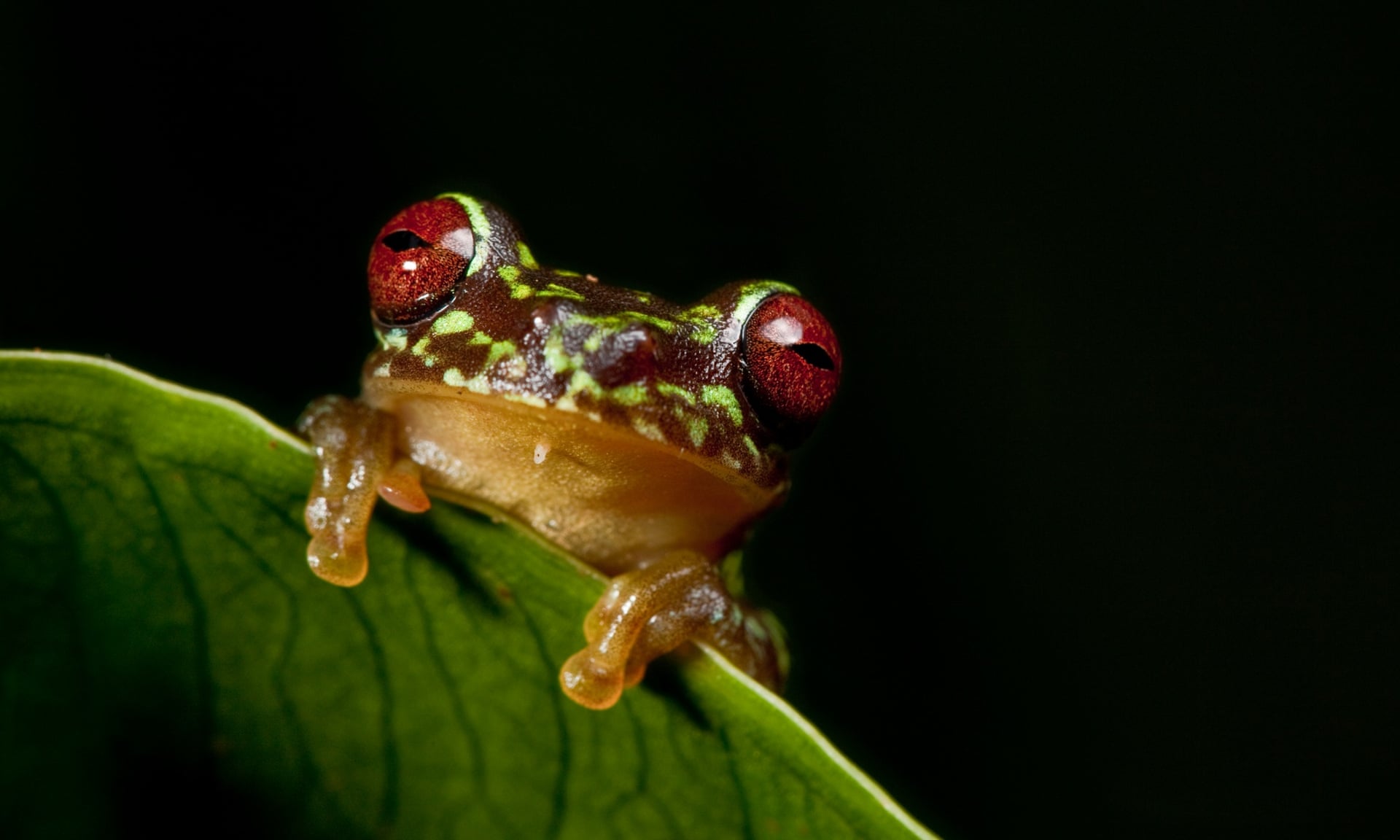
In order to address the massive decline and extinction of amphibians worldwide the Amphibian Survival Alliance is addressing the primary threats of habitat loss and disease. New reserves are being created to protect critical habitat for species such as this Guatemalan brook frog, Duellmanohyla soralia, and ensure a brighter future for frogs' forests: photo by Robin Moore via The Guardian, 11 September 2014
 .
.
In order to address the
massive decline and extinction of amphibians worldwide the Amphibian
Survival Alliance is addressing the primary threats of habitat loss and
disease. New reserves are being created to protect critical habitat for
species such as this Guatemalan brook frog, Duellmanohyla soralia, and ensure a brighter future for frogs' forests: photo by Robin Moore via The Guardian, 11 September 2014
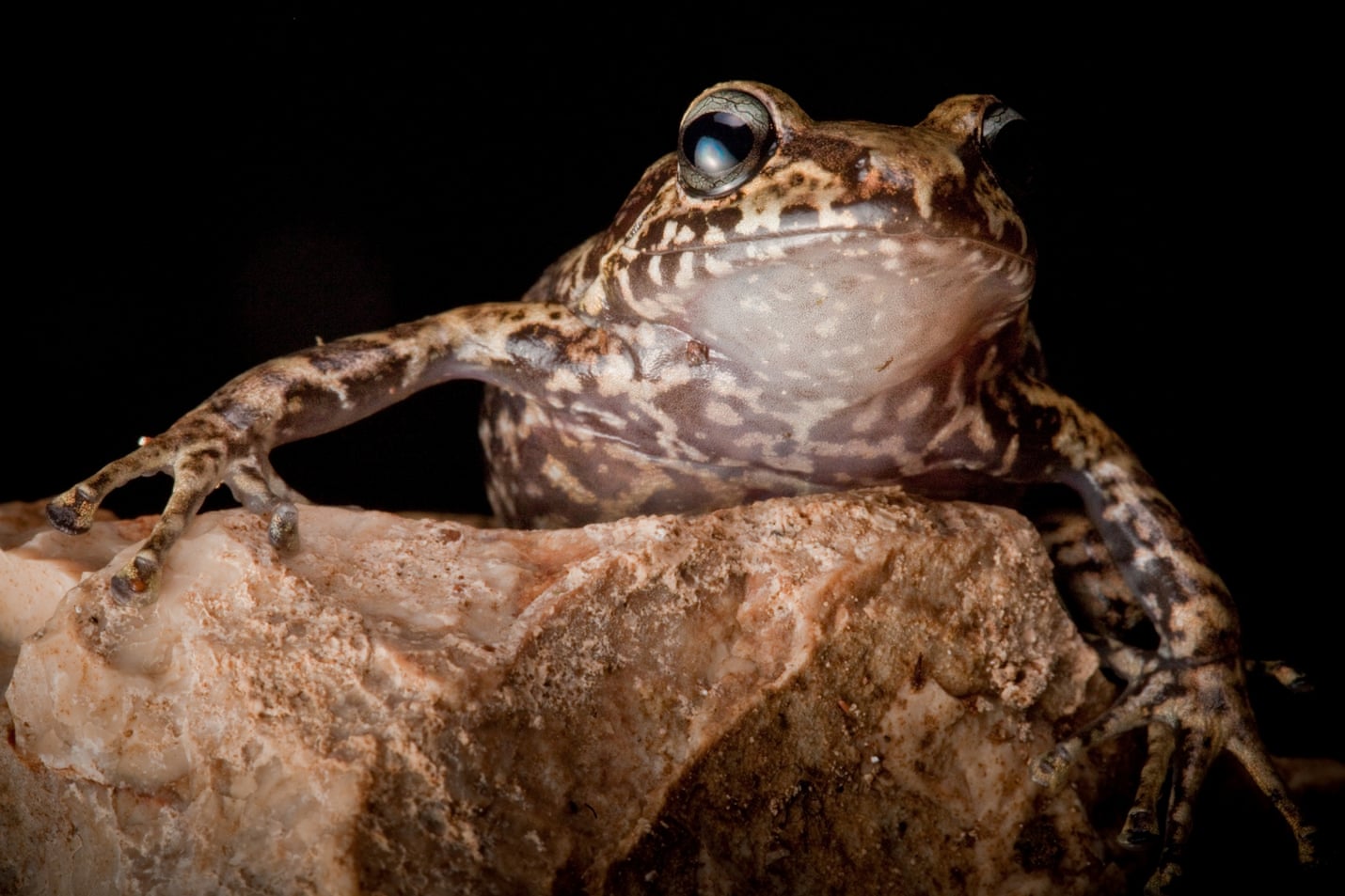
The La Hotte Glanded frog, Eleutherodactylus glandulifer, is one of six frogs rediscovered after close to two decades in southwest Haiti. The frogs are a flagship of hope for the preservation of fragmented cloud forests: photo by Robin Moore via The Guardian, 11 September 2014

The La Hotte Glanded frog, Eleutherodactylus glandulifer,
is one of six frogs rediscovered after close to two decades in
southwest Haiti. The frogs are a flagship of hope for the preservation
of fragmented cloud forests: photo by Robin Moore via The Guardian, 11 September 2014
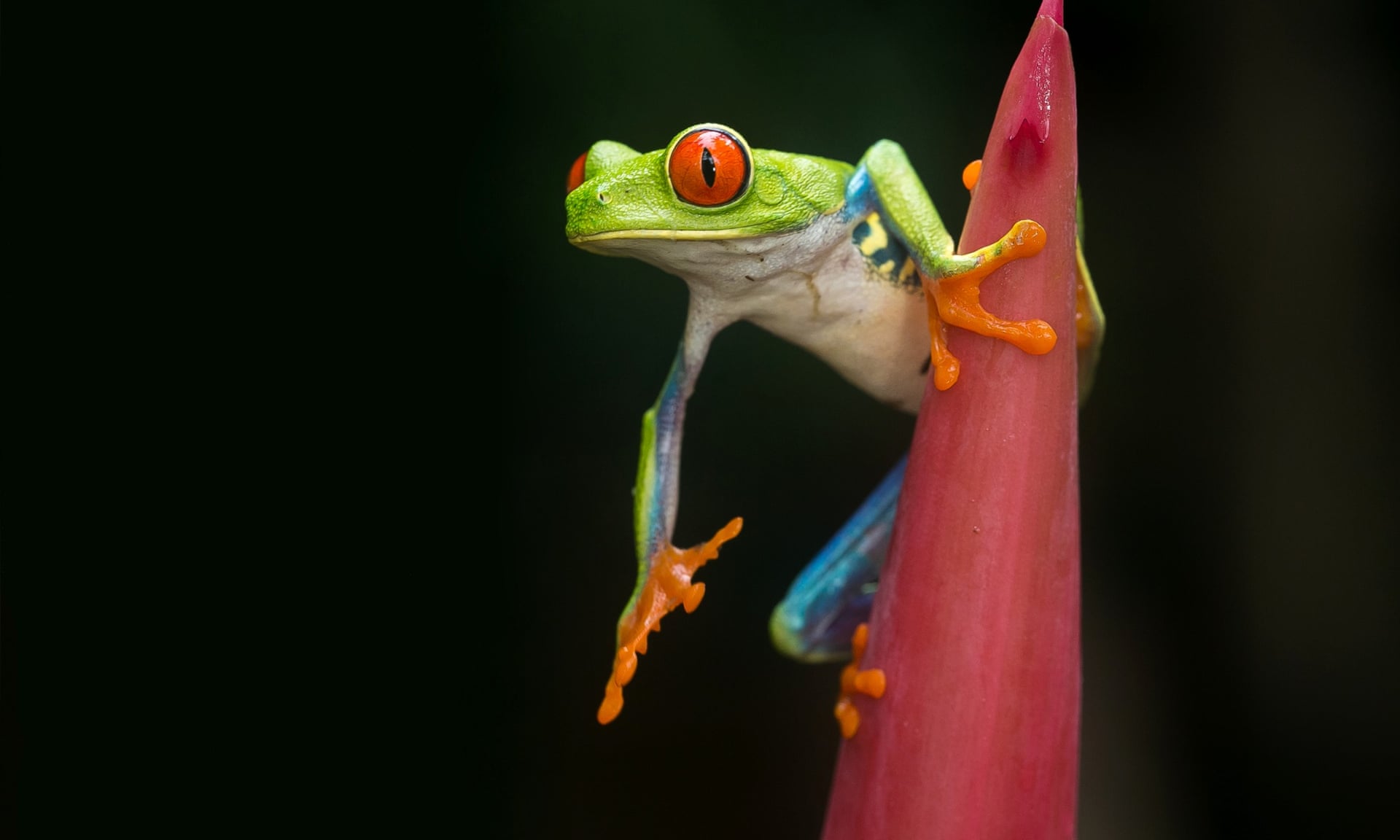
A Costa Rican red-eyed tree frog (Agalychnis callidryas, native to the Neotropical rain forests of Central America) prepares to make its leap: photo by Arnel Hecimovic via The Guardian, 17 January 2014

A Costa Rican red-eyed tree frog (Agalychnis callidryas, native to
the Neotropical rain forests of Central America) prepares to make its leap: photo by Arnel Hecimovic via The Guardian, 17 January 2014

Off it goes: photo by Arnel Hecimovic via The Guardian, 17 January 2014

Off it goes: photo by Arnel Hecimovic via The Guardian, 17 January 2014
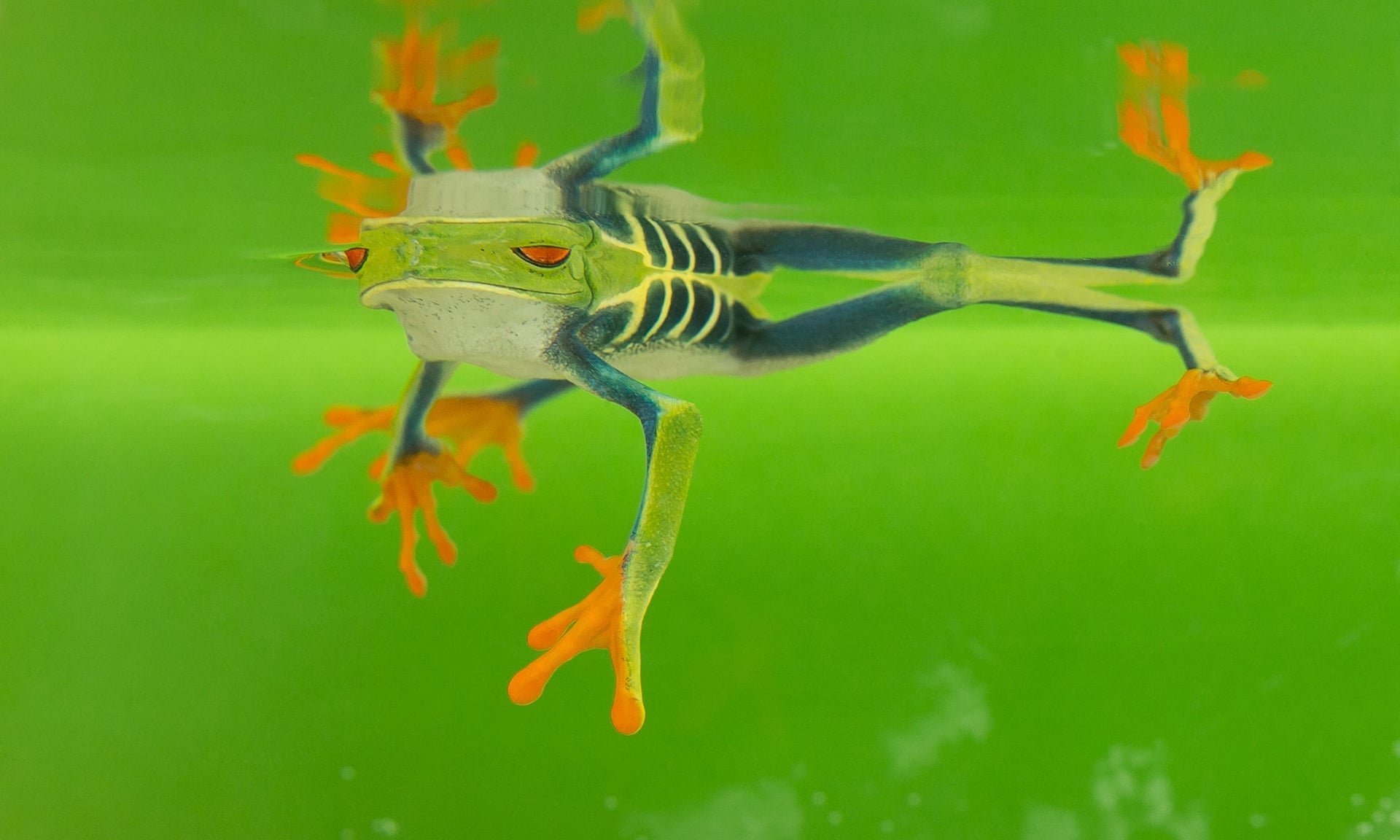
A red-eyed tree frog peers out from the surface of the water: photo by Arnel Hecimovic via The Guardian, 17 January 2014
 .
.
A red-eyed tree frog peers out from the surface of the water: photo by Arnel Hecimovic via The Guardian, 17 January 2014

The frog hugs a flower bud: photo by Arnel Hecimovic via The Guardian, 17 January 2014
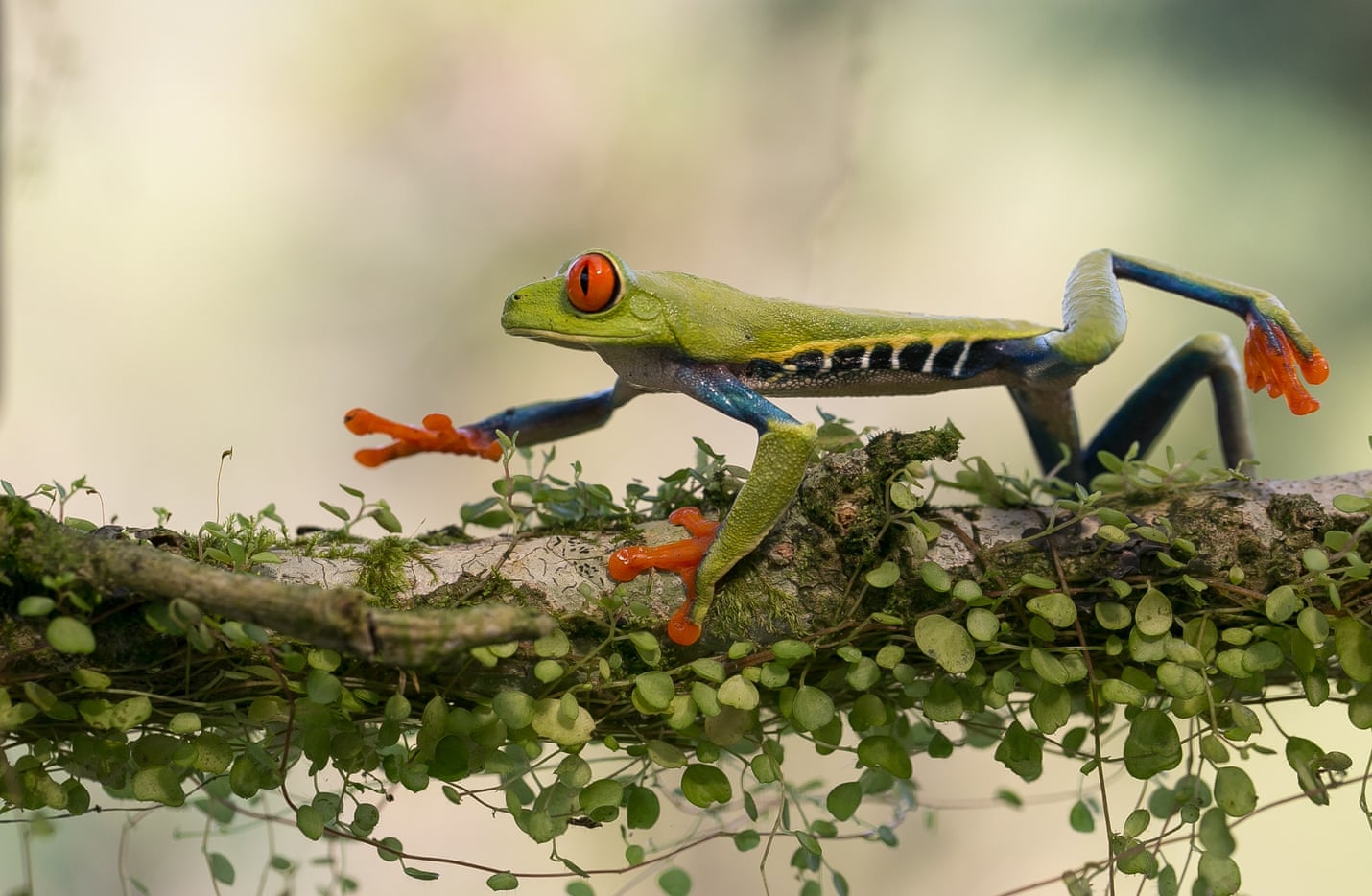
And now crawls along a tree branch: photo by Arnel Hecimovic via The Guardian, 17 January 2014

And now crawls along a tree branch: photo by Arnel Hecimovic via The Guardian, 17 January 2014
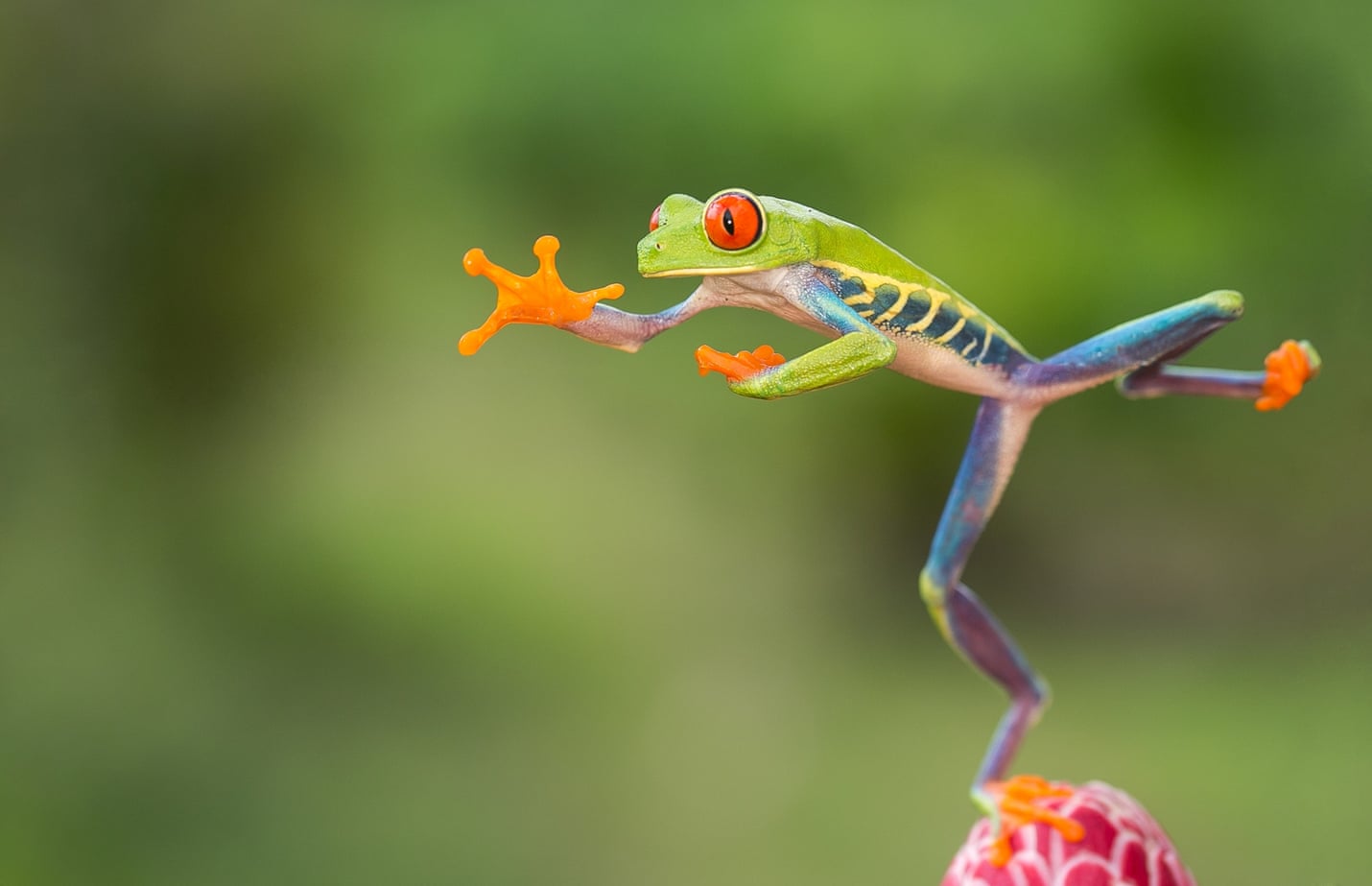
Karate frog: photo by Arnel Hecimovic via The Guardian, 17 January 2014

Karate frog: photo by Arnel Hecimovic via The Guardian, 17 January 2014

In flight: photo by Arnel Hecimovic via The Guardian, 17 January 2014
 .
.
In flight: photo by Arnel Hecimovic via The Guardian, 17 January 2014
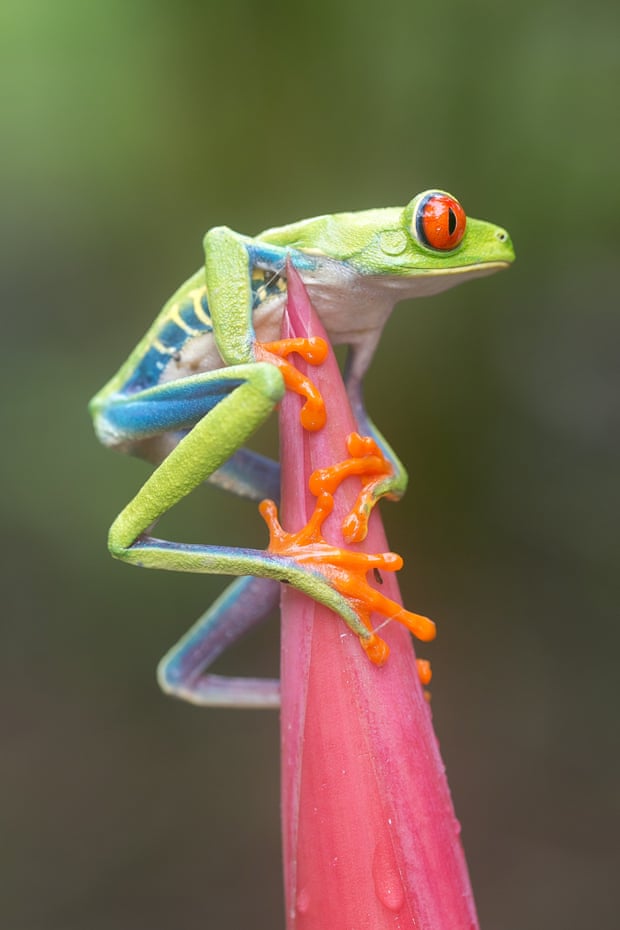
Taking a breather: photo by Arnel Hecimovic via The Guardian, 17 January 2014
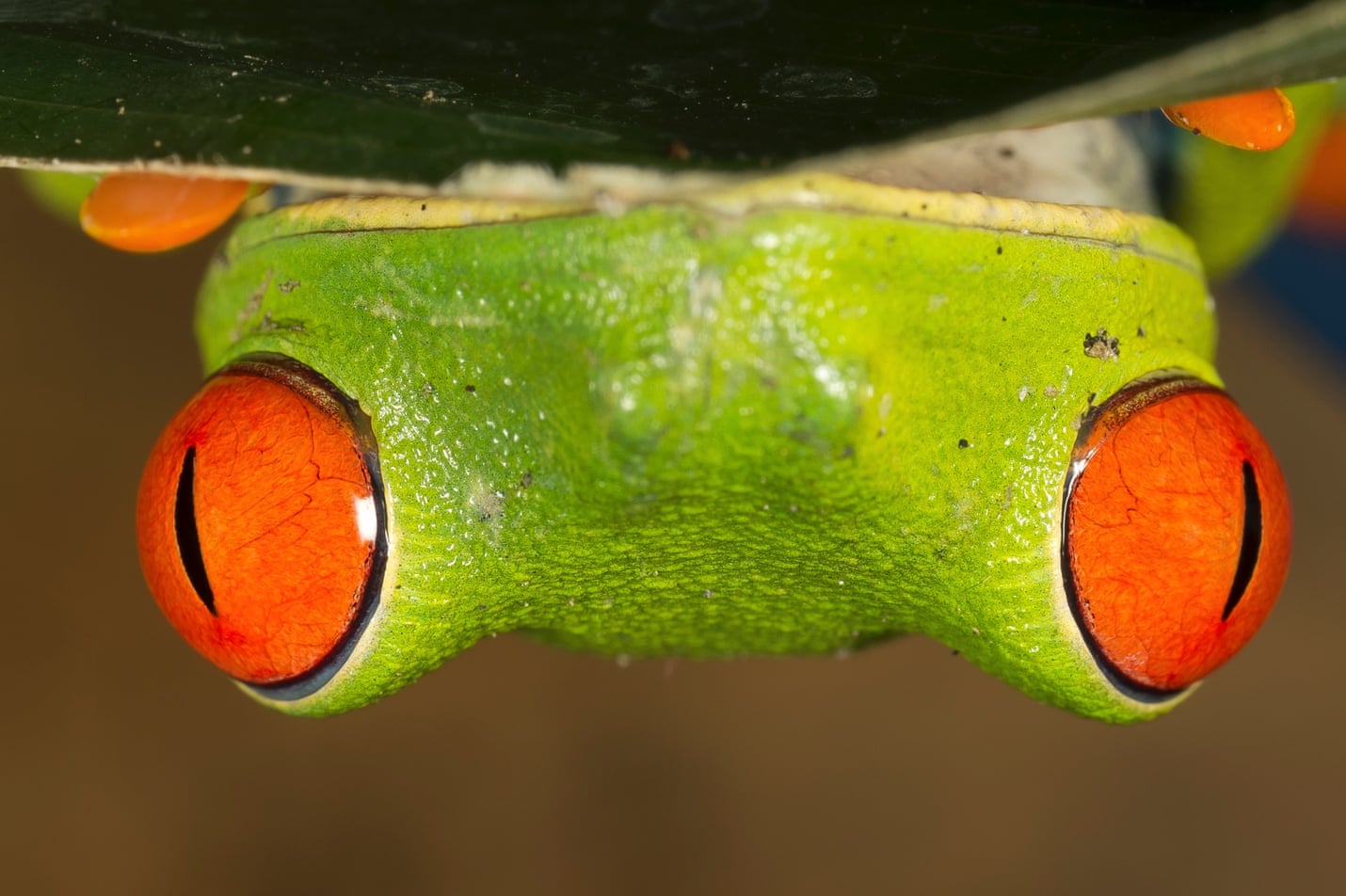
Upside down: A close up of those eyes: photo by Arnel Hecimovic via The Guardian, 17 January 2014

Upside down: A close up of those eyes: photo by Arnel Hecimovic via The Guardian, 17 January 2014
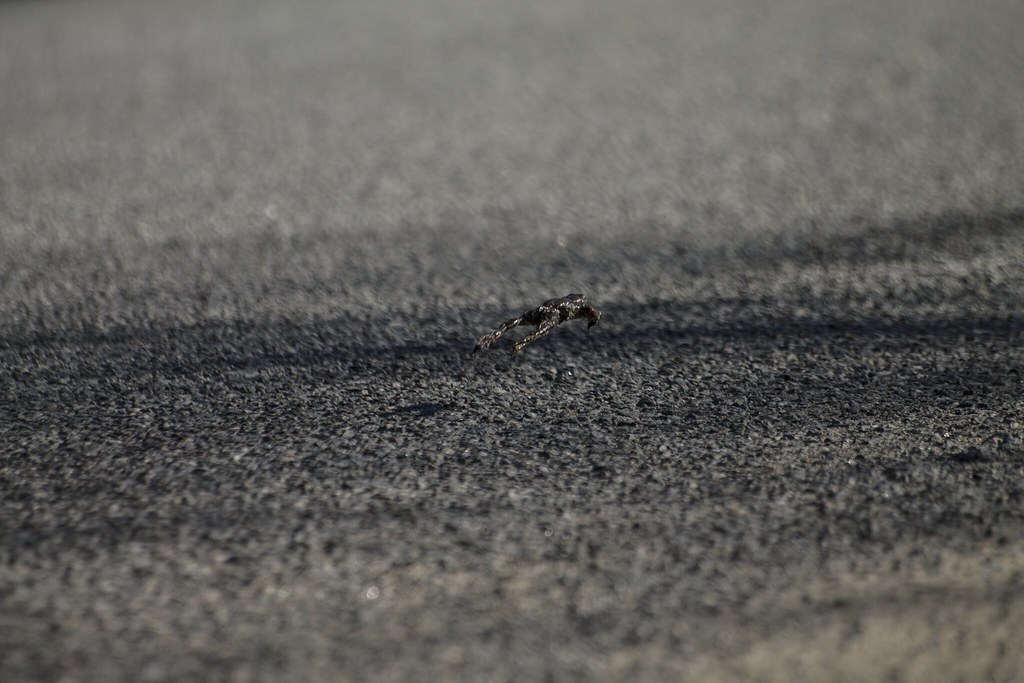
The great escape (spring migration, Salmistu, Harju County, Estonia): photo by OKaur (Kaur O), 28 April 2013
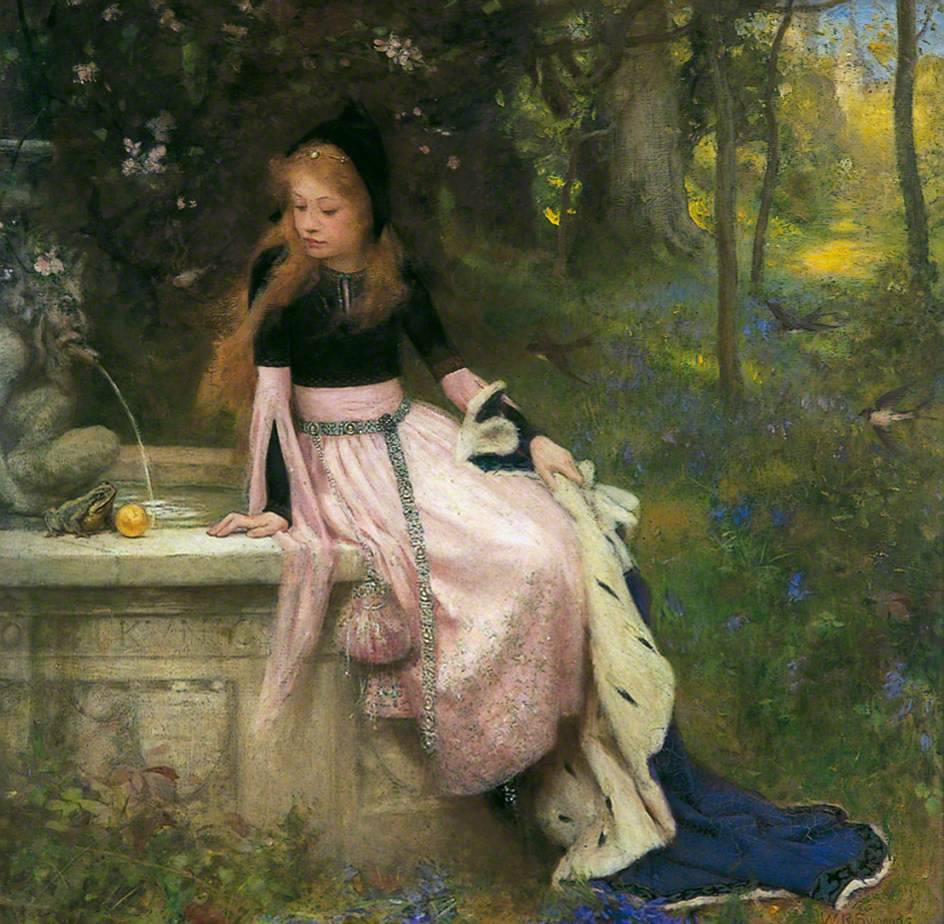
oh...casi una experiencia mística ...!!
ReplyDeleteSandra,
ReplyDeleteWell, I do love a wee frog.
Maybe not much time left for frog-loving, however, what with the way humans have treated them, along with everything else.
(I am supposing "climate change" and "overpopulation" and "habitat loss" are things that have to do with human activities.)
"Of all the species that have populated Earth at some time over the past 3.5 billion years, more than 95% have vanished — many of them in spectacular die-offs called mass extinctions. On that much, researchers can generally agree. Yet when it comes to taking stock of how much life exists today — and how quickly it will vanish in the future — uncertainty prevails.
"Among the groups that can be assessed, amphibians stand out as the most imperilled: 41% face the threat of extinction."
1,957 amphibian species were listed as either threatened or vanished, in a study of biological diversity done by the journal Nature in December 2014.
Many of these species have appeared on and disappeared from Earth without every being noticed by humans.
It's had to miss what you never knew you had. Then it's gone, and you never noticed.
Though, come to think of it, maybe we did, a bit.
Of all the lovely night-songs of Earth, the two most lovely, for me, would have to be the songs of crickets, and the songs of frogs -- the happiness songs, that is, which frogs make in places where there is a lot of rain, and not too much concrete.